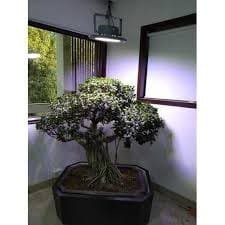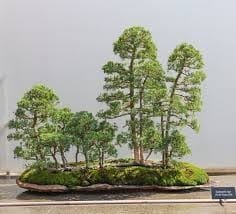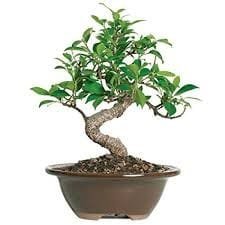As a bonsai grower, you also want to showcase your best bonsai styles and masterpieces indoors. Bonsai can be grown indoors in pots or containers. While many bonsai species weaken and die in an artificial environment, there are some tropical and sub-tropical bonsai species that can survive indoors.
With the advent of digital technology, you can already manage the indoor environment to make it suitable for indoor growing for any type of plant. It includes growing bonsai too.
In this post, you’ll learn how to grow bonsai tree indoors. Let’s get started!
Can I Grow Bonsai Tree Indoors?
Yes, you can. One of the most common bonsai species you can grow indoors is Ficus. It has a high tolerance to low humidity, and it can survive the indoor environment quite well. This bonsai tree species is also perfect for novice growers.
Bonsai growers are faced with a big question when deciding to grow bonsai. It is nice to know that you can create beautiful bonsai styles and showcase them indoors for your family and friends to see. It is a fulfilling or rewarding experience, indeed!
The other bonsai species popularly grown indoors include the Carmona (Fukien Tea), the Crassula (Jade), the Sageretia (Sweet Plum), the Schefflera Arboricola (Hawaiian Umbrella).
You can’t keep a non-tropical bonsai indoors because temperate bonsai trees would require a dormancy period (during winter), wherein their annual growth cycle ends, and the bonsai prepares itself for the next cycle in early spring. During the dormancy period, the light intensity and temperatures gradually decrease for several weeks, and this won’t happen if you kept bonsai indoors.
How to Maintain a Healthy Bonsai Tree Indoors
Always remember that caring a bonsai tree indoors is different from growing plants in pots or containers. Because bonsai trees are planted in small containers, they don’t have enough room for water and nutrients. That’s why proper care is crucial.
1) Provide Enough Light
One of the main problems with keeping a bonsai tree indoors is that the light intensity light indoors is much lower as compared outdoors. The light inside the home or building is too little for most bonsai species.

Image Credit: Indiamart
Insufficient light hampers the growth of your bonsai, and the leaves won’t grow back, restricting you from leaf trimming and pruning. Successful bonsai cultivation in an indoor setting would require choosing a low-light-tolerant bonsai species or providing artificial lighting.
When the light intensity is very low, trees won’t die right away, but growth gradually decreases which eventually weakens the plant. To avoid this adverse effect, placing your bonsai at in front of your window with a bright spot facing the south. Also, your bonsai would need artificial lighting. You can use fluorescent light, one with radiating growth-friendly spectra. You can also use light-emitting diode lighting approximately 10 hours a day.
Using fluorescent lights or high-intensity lamps is beneficial because it combines with other indoor lighting, allowing you to grow bonsai at home. Providing extra care should be carried out at all times to avoid cold air from entering through the window. Doing so will also prevent high radiated heat from directly exposing your bonsai to the sun.
2) Provide High Humidity
Too low humidity levels is another issue you’ll face when growing a tropical bonsai tree indoors. Remember that room heating and air conditioning significantly reduce air humidity which can be harmful to your bonsai.

Image Credit: Pinterest
Your bonsai needs a relatively high level of humidity, which is higher as compared to indoor conditions. But, you can increase the humidity level near your bonsai. Just place it on a humidity tray that is filled with water. You can also mist your bonsai a few times a day. Open the window during the day to increase air circulation which helps your bonsai meet the humidity it needs to survive indoors.
Ficus bonsai has waxy leaves; that’s why this species is perfect for indoor growing. However, other species would require additional humidification. You can integrate humidification solutions with lighting by providing a dedicated space at home. You can place your bonsai in terrariums or other enclosures, misting humidifiers, or high-capacity evaporative humidifiers.
3) Water and Fertilize Your Bonsai Properly
When it comes to watering and fertilizing your bonsai, one important rule is to avoid doing it on a routine. Only water your bonsai if it is dry by using a moisture meter, or manually using your finger or the chopstick method. Fertilize your bonsai sparingly.
Bonsai doesn’t need too much fertilizer, but you need some when you’re growing indoors because it is on a small pot or container. The nutrients your bonsai would need to depend on a lot of factors. You can check the details of fertilizing bonsai properly by reading the sections dedicated for bonsai fertilizing on this website.

Image Credit: Andalucia
4) Maintain the Right Temperature
Bonsai that are tropical tree species require relatively high temperatures, which is the same temperature to the standard room temperature of a living room. Tropical bonsai trees can tolerate room temperature all year-round but can’t tolerate temperatures near freezing, which usually happens near an open window during cold weather.
On the other hand, subtropical bonsai trees can survive lower temperatures. Mediterranean-climate bonsai trees and semi-tropical bonsai species usually grow better whenever temperatures drop. They thrive well when during the winter season with temperatures below standard room temperature.

Image Credit: TimesofMalta
As long as you provide the right temperature for your bonsai, it will grow healthy and can withstand other elements. Of course, caring for a bonsai indoors is holistic, taking into consideration all aspects of care and not merely concentrating on one aspect.
Conclusion

Image Credit: Stonelantern
It’s possible to grow bonsai indoors. The important thing is you provide all the necessary elements it needs to survive an indoor setting. By providing an adequate amount of light, humidity, and temperature, as well as water and fertilizer, you’ll be able to grow a healthy indoor bonsai.


